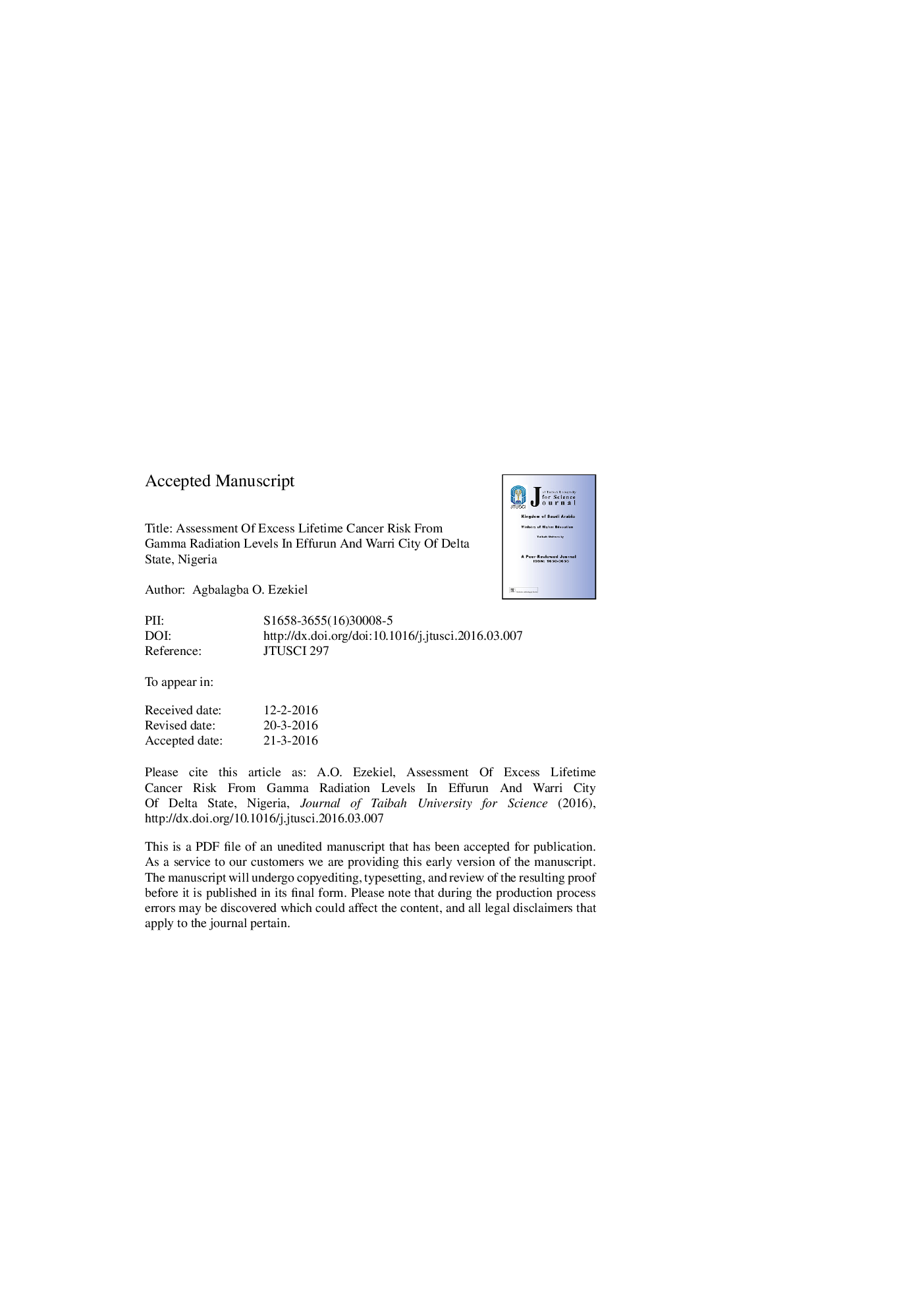| Article ID | Journal | Published Year | Pages | File Type |
|---|---|---|---|---|
| 5143517 | Journal of Taibah University for Science | 2017 | 23 Pages |
Abstract
A study of the terrestrial BIR levels to estimate the excess lifetime cancer risk in Warri city has been carried out, using a Digilert 100 nuclear radiation monitor and a geographical positioning system (GPS) for GIS mapping. Monitoring of the terrestrial BIR levels was carried out between May 2014 and June 2015, and the city was delineated into eight zones. The measured average exposure rates ranged from 0.006 mRhâ1 (0.51 mSvyâ1) to 0.029 mRhâ1 (2.49 mSvyâ1) with an overall mean value of 0.016 ± 0.006 mRhâ1 (1.37 ± 0.47 mSvyâ1). The estimated mean outdoor absorbed dose rate for each zone ranged from 121.90 ± 25.32 nGyhâ1 in the Ajamogha zone to 190.16 ± 51.60 nGyhâ1 in the industrial zone, with a mean value of 141.30 ± 31.31 nGyhâ1. The mean annual effective dose equivalent (AEDE) calculated was 0.17 ± 0.04 mSvyâ1, while the mean excess lifetime cancer risk (ELCR) was (0.61 ± 0.14) Ã 10â3 mSvyâ1. The calculated dose to organs showed that the testes have the highest organ dose of 0.11 mSvyâ1, while the liver has the lowest organ dose of 0.06 mSvyâ1. The GIS maps of the study area revealed that exposure levels at 64 of the 94 sampling locations (68.1%) exceeded the world ambient standard levels of 0.013 mRhâ1 (1.0 mSvyâ1). recommended by UNSCEAR; these values are higher than the values reported in the literature. However, these values may not constitute any immediate health risk to the residents of Warri city. The calculated excess lifetime cancer risk values indicate that the chance of contracting cancer for residents of the study area is low and at the effective dose from the present exposure rate to the adult organs investigated is insignificant.
Related Topics
Physical Sciences and Engineering
Chemistry
Chemistry (General)
Authors
Agbalagba O. Ezekiel,
